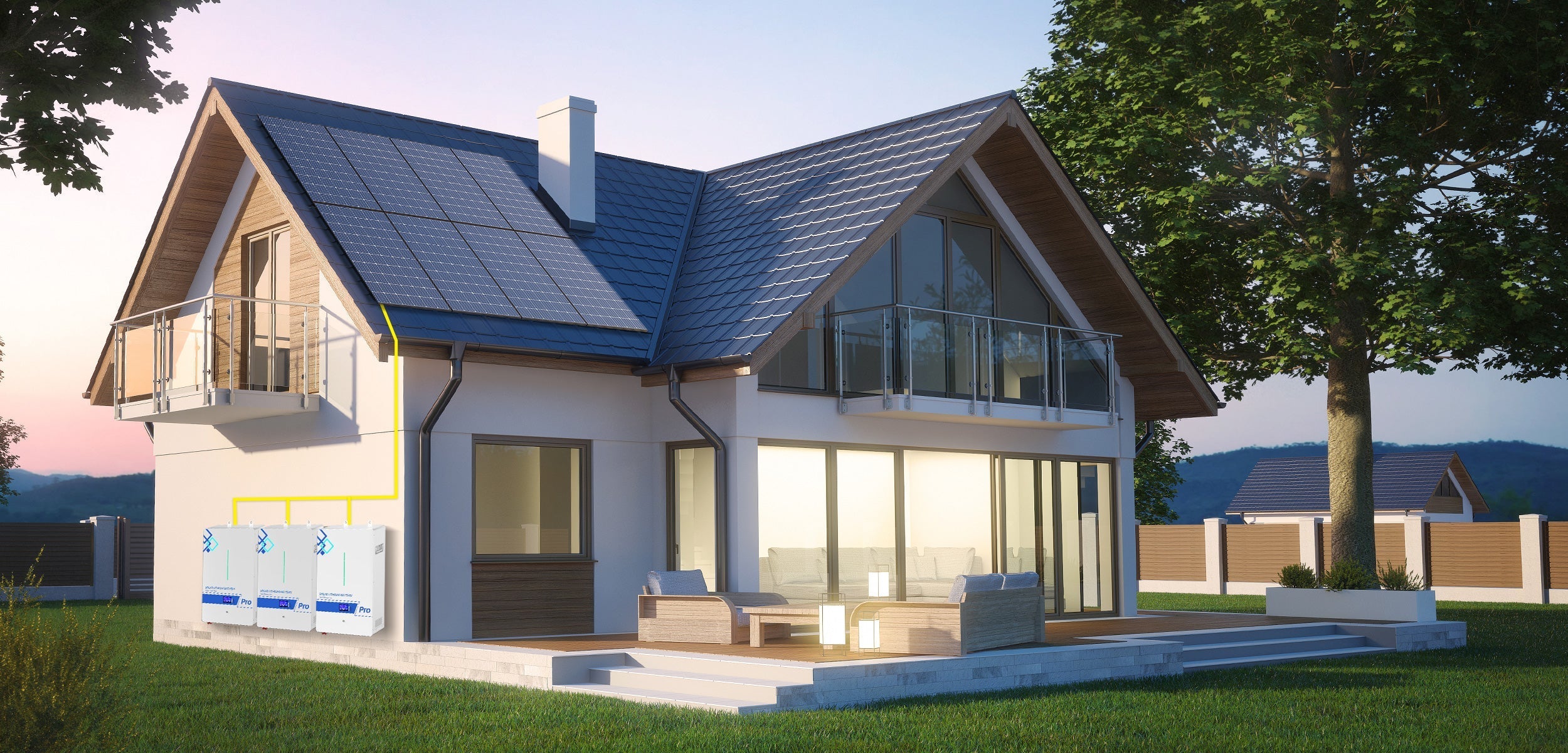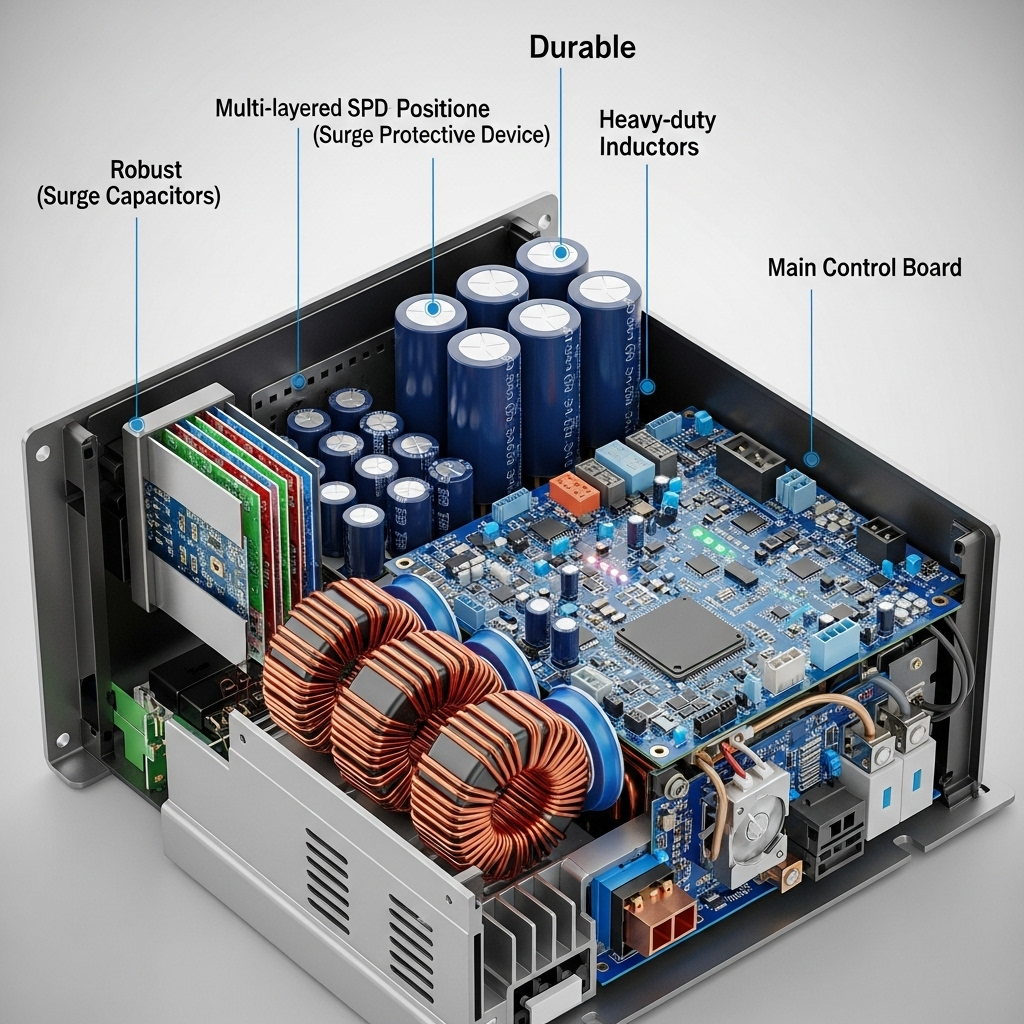Non-legal/engineering note: I focus on practical checks and link to standards so you can verify claims. Use this as a selection aid, not as a substitute for local codes or certification.
Selecting an inverter takes more than a peak rating. In real projects, I look at three pillars: efficiency curves, total harmonic distortion (THD), and surge handling. Below is how I evaluate each, the thresholds I apply, and where to look for formal references.
1) Inverter efficiency: beyond a single number
Why the curve matters
Most systems spend long hours at partial load. A unit that is stellar at 98% peak can still waste energy at 10–30% load. I compare:
- Efficiency @ 10–20% load: aim ≥90% for residential and light C&I where low-load hours are common.
- Tare (no-load) consumption: I flag >10–15 W as a concern for small systems; it accumulates daily losses.
- Thermal derating: check the datasheet curve vs. ambient; in hot sites, derating can dominate yield.
| Metric (illustrative) | Inverter A | Inverter B | Comment |
|---|---|---|---|
| Peak efficiency | 98.5% | 97.5% | A looks higher at peak |
| Efficiency @ 25% load | 94% | 96% | B is better at part-load |
| Tare consumption | 20 W | 5 W | B saves energy overnight |
Note: figures are illustrative for methodology, not endorsements.
2) Power quality: understanding THD
What to accept in practice
THD expresses deviation from a clean sine wave. For most residential/C&I loads, I treat <5% THD at rated power as a practical benchmark to protect motors, PSUs, and sensitive electronics. See general guidance such as IEEE 519 for harmonic limits at the point of common coupling and local grid documents such as EN 50160 for supply quality context.
Trade-offs I watch
- Ultra-low THD usually needs stronger filtering, which can trim peak efficiency slightly—acceptable if part-load stays efficient.
- Verify THD across load steps (e.g., 25%, 50%, 75%, 100%) and with typical harmonic sources (drives, switch-mode supplies).
3) Surge handling: start-up realities
Reading the fine print
Surge (peak) power matters for motor loads. I request three numbers: continuous rating, surge kW, and surge duration. A lower peak with a longer duration can outperform a higher-but-instantaneous figure.
| Spec (illustrative) | Inverter X | Inverter Y | Implication |
|---|---|---|---|
| Continuous | 5,000 W | 5,000 W | Same base |
| Peak | 10,000 W | 9,000 W | X has higher headline |
| Surge duration | 1 s | 5 s | Y better for hard-start motors |
Selection checklist I actually use
- Efficiency curve: ≥90% @10–20% load; clear derating curve vs. temperature; tare consumption within site budget.
- THD & PQ: THD <5% at rated power; vendor provides harmonic spectrum plots and test setup notes.
- Surge envelope: peak magnitude and duration match worst-start load; confirm with nameplate inrush or measured LRA.
- Standards & tests: applicable references such as IEEE 1547/1547.1 (interconnection and tests), UL 1741 (North America), IEC 62116 (anti-islanding). Ask for latest certificates or test summaries.
- Thermal & acoustics: fan profile, heat-sink temperature under worst-case; measure connector/bus temperatures during stress tests.
How I verify before purchase
- Run a load sweep (10% → 100%) to log efficiency and THD; capture points at 25/50/75%.
- Perform a surge test with the hardest-start motor; confirm trip/no-trip and voltage sag.
- Check temperature rise at terminals and connectors under peak irradiance or worst load.
- Review certificates (IEEE/UL/IEC/EN) and make sure firmware tested equals the offered version.
THD, efficiency, and surge: balancing the triad
Low THD protects equipment; high part-load efficiency protects yield; proper surge protects uptime. If one pillar is marginal, I compensate elsewhere (e.g., lower tare with smart standby, or add soft-starters for tough motors).
Further reading (neutral sources)
- IEEE 519 — Recommended Practice for Harmonic Control
- IEEE 1547 — Interconnection of DER & IEEE 1547.1 — Conformance Tests
- UL 1741 — Inverters/Converters for Use in Power Systems
- IEC 62116 — Anti-islanding test procedure
- EN 50160 — Voltage characteristics of public distribution systems
FAQ
What is a good inverter efficiency target?
Peak ≥95% is common, but prioritize the curve: aim for ≥90% at 10–20% load and confirm thermal derating at your site’s temperature range.
Is THD <5% always necessary?
As a general benchmark for residential/C&I, yes. Sensitive electronics and motors benefit from cleaner waveforms; validate with vendor spectra.
How do I size surge capacity?
List motor loads and estimate inrush (often 3–5× running watts). Choose an inverter whose surge magnitude and duration exceed the hardest-start case.
Wrap-up
My rule: don’t buy a headline number. Buy the curve (part-load), the wave (THD), and the envelope (surge). With logs, spectra, and standard-backed tests in hand, you’ll get cleaner power, higher yield, and fewer surprises.





Leave a comment
All comments are moderated before being published.
This site is protected by hCaptcha and the hCaptcha Privacy Policy and Terms of Service apply.